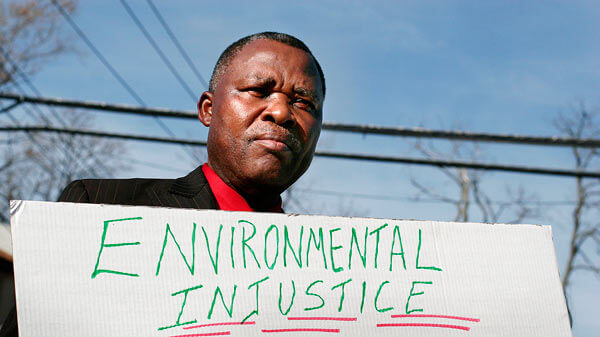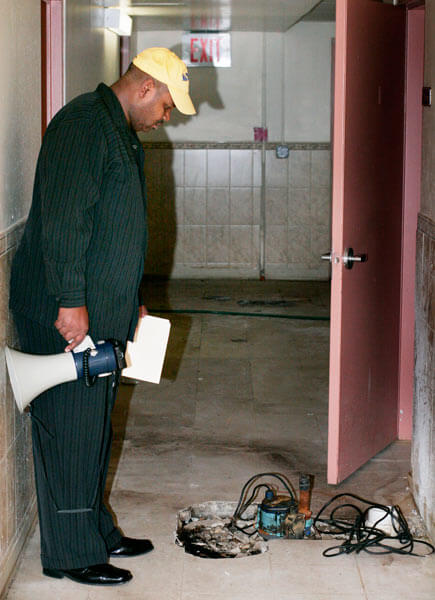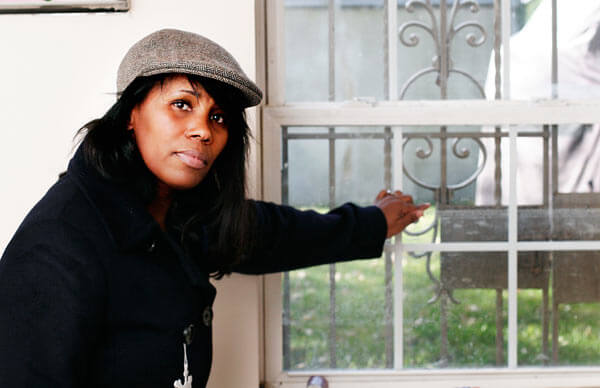By Joe Anuta
Southeast Queens residents and lawmakers held a protest Saturday outside a closed water facility, again calling on the city to restart the pumps to relieve the flooding that has plagued the area for more than a decade.
“I want a solution, and our belief is the quickest solution is to pump,” said state Assemblyman William Scarborough (D-St. Albans). “Rain or shine, you have people here who have to pump their houses 24 hours a day.”
About 30 people gathered at 108th Avenue and 165th Place in front of what is known as Station No. 6, an old well-pumping station that was run by the Jamaica Water Co. until the city Department of Environmental Protection bought it in 1996 and shut off the pumps after finding contaminated water.
At that point, water that was formerly sucked out and piped into area homes accumulated under the ground.
The water table is now so high that the superintendant at the Greater Allen Cathedral Senior Center, down the street from the station, had to install pumps that run around the clock to keep the basement dry.
Doors marked “movie room” and “game room” in the basement of the center sit empty as mold slowly conquers the tile floor and a hole drilled in the floor reveals water just below the surface.
Activists who spoke said the city would never let preventable flooding happen in other parts of the city.
But because it is southeast Queens, the DEP thinks it can drag its feet, Scarborough contended.
The assemblyman cited a plan by the DEP to restart the pumps in 2018 to compensate for a project upstate that will deliver less water to the five boroughs.
“If they can pump it in 2018, they can pump it now,” he said. “We’re supposed to sit here for seven years with this flooding?”
The DEP recently held a town hall meeting with Scarborough, where Mark Lanaghan, assistant commissioner for the department, conceded that the efforts to stem the flooding had not gone as well as he had hoped.
“The Assembly member is quite fair in saying we haven’t given a clear solution to flooding in southeast Queens,” he said at the meeting.
The city had invested $241 million over the last decade in storm sewer improvements, but Lanaghan said the city needs more money — to the tune of $200 million — to clean the water at the wells to determine which ones are located in the most flood-prone areas.
But Leroy Gadsden, president of the NAACP’s Jamaica branch, estimates that 8,000 to 20,000 people are affected by the rising water table.
“That’s inhumane,” he said. “[The city] still allows people to build out here and invest their hard-earned money.”
Keisha Malphurs bought and moved into her house near Station No. 6 in 2007, shortly before her basement was completely destroyed by flooding the first time.
The door to her basement busted off its hinges and broke out the windows as the water levels reached higher than 4 feet.
She along with the other residents at the protest want the city to take action.
According to Scarborough, the city did begin to move on the problem when it instituted a pilot program at the site to purify the water and pump it once again.
But around 2005, the project was scrapped due to cost and the pumps have sat unused ever since.
Reach reporter Joe Anuta by e-mail at januta@cnglocal.com or by phone at 718-260-4566.




































